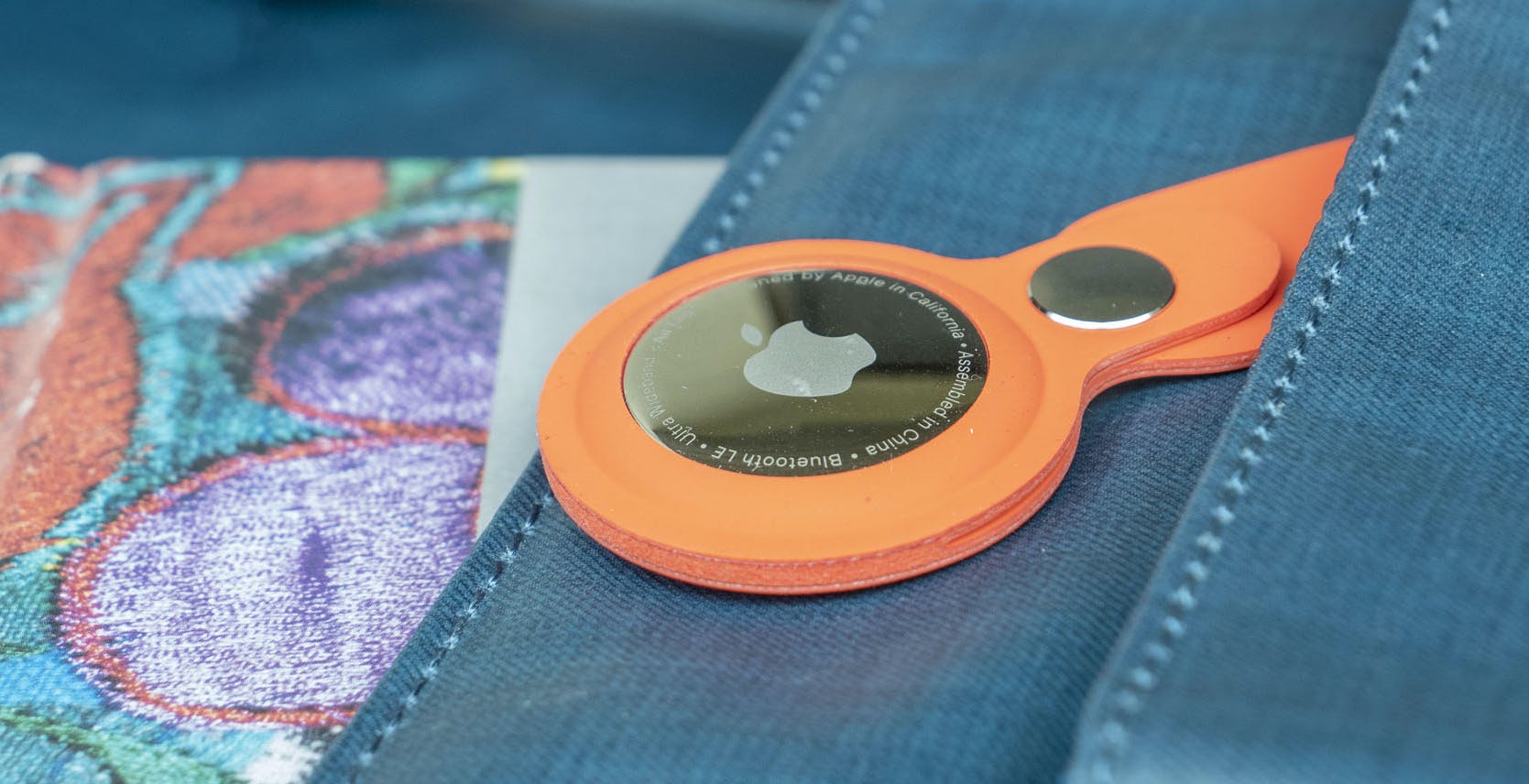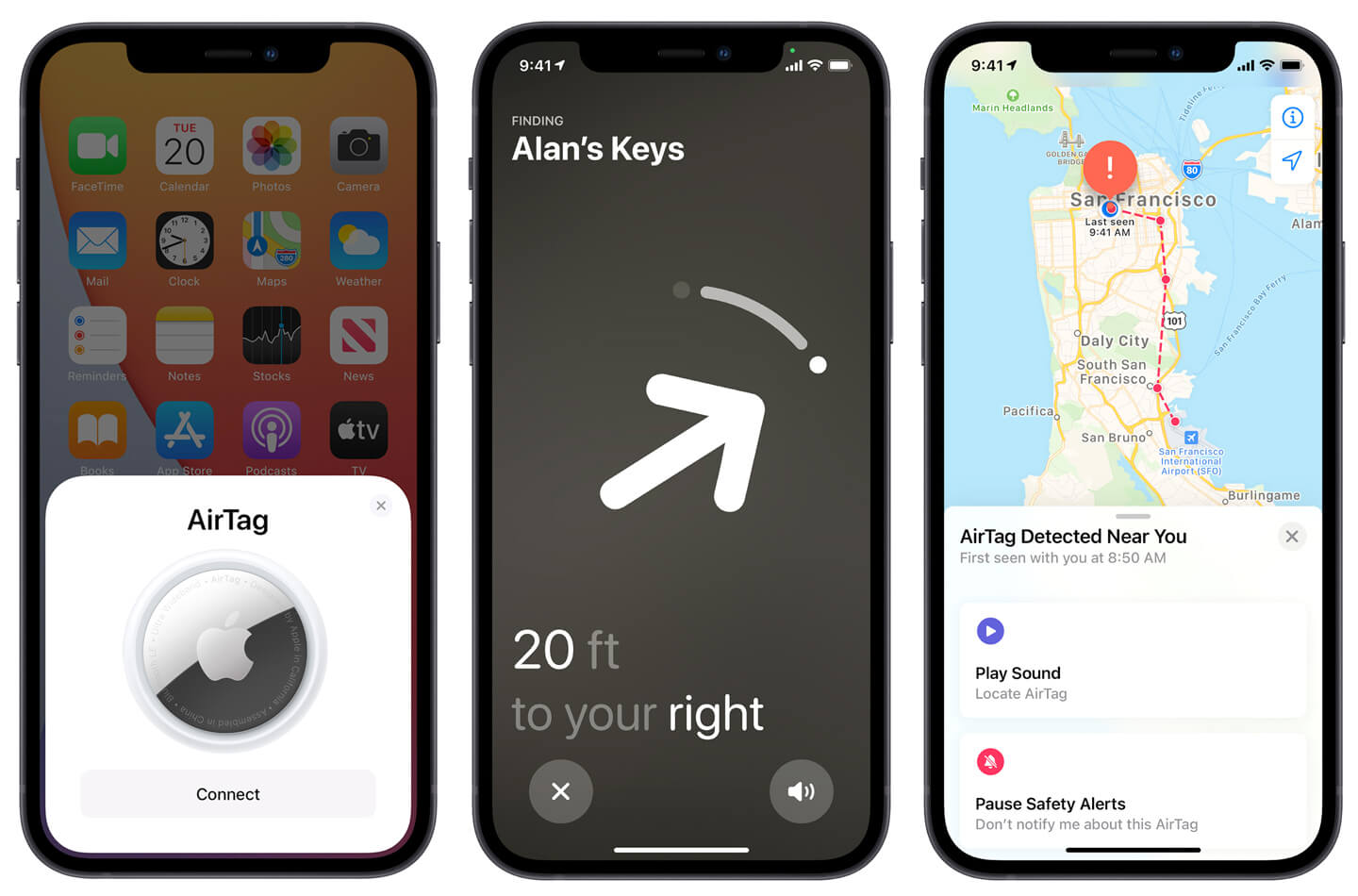© 2000-2025 - Enkey Magazine - All rights reserved
ENKEY SNC - VAT ID IT03202450924 / REA Code CA253701 - Phone. 078162719
Are you tired to lose the car’s keys, the pocket, the bag? With AirTag we can use the function Where is of t he iPhone to find the objects. Here you have what it is and how it works.
What’s AirTag
AirTag is a small round device, as big as a coin or a button. This device is a small tracker bluetooth. There are many of them in commerce, but this uses all the potentialities of the network Where is of Apple.

The AirTags weight only 11 grams and they have a diameter of 32 millimeters. The design is elegant, in stainless steel.
These small “technological buttons” can be attached on the daily usage objects that we lose or that we risk to lose. Like the house’s keys, the car’s ones, the bag, the pocket, but even the bike that we park under the office or the luggage that we board at the airport.
In case of disappearing it will be enough to activate the function Where is on the iPhone, iPad or iPod and our object will appear on the map.
“AirTag. Lose the habit to lose things”
“With AirTag is very easy to not lose your things. Hook one of them to the key, put one inside the bag and so on: there you have them appearing on the app Where is, the same one that you use to localize your Apple devices or to find your friends and relatives”.
What’s the app Where is
Before to continue to talk about the new AirTag we must do a little step back, because maybe not everyone knows the application thought by Apple to not lose our own devices. What’s Where is and how does it work?
The app Where is available on all the Apple devices for a while already. If it’s activated it helps us to localize our own lost devices. For example, we can open it on the Mac and discover where is our lost iPod. Did we left it in the office, inside the car or at the aunty home?
In a moment its position will appear on the map. The devices, to be connected between each other and to look for each other, must share the same Apple ID, but not only. We can look for the devices of the whole family, even without the same ID, if we are all part of the same group “in family”.
But we can even access to the Cloud from any browser web and look there for our lost device.
I lost an object!
Now let’s come back talking about the AirTag. Did you lose the house’s key? No problem, let’s open the app Where is and look for them on the map.

“Did you lose the pocket? No problem, with AirTag. Let’s open the panel Objects from the app Where is and let the speaker integrated to the AirTag ring. Or you can just say “Hey Siri, looks for my pocket”. If it’s close, for example under the sofa or in the other room, it will be enough to follow the sound to find it”.
If the lost object is close, so AirTag will ring and it will allow us to easily and quickly find it. Therefore, we can use even the function “Precise position”, that will bring us in the exact place.
To use the precise function we must be close to the lost object. Once activated the function, on the screen will appear a row with the direction to follow and the precise distance to the object.
This function is available only on iPhone 11, iPhone 11 Pro, iPhone 11 Pro Max, iPhone 12 and iPhone 12 mini, iPhone 12 Pro and iPhone 12 Pro Max.
But what does happen if the object isn’t close to us?
AirTag connects to the network Where is
If the object isn’t close to us, you can ask the whole network Where is to help you. The network Where is made by hundreds of millions iPhones, iPads and Macs.
They will help us to find the lost object. The AirTag sends a Bluetooth sign that can be captured by all the Apple devices, with the function Where is activated, that are next to it.
These devices, then, send the position to the Cloud, so you will be able to see it on the map of your app Where is.
All the process, Apple says, is safe and respectful of the privacy, the sign, infact, is sent anonymously and crypted.
AirTag is for sale starting from 35 euros. It is easy to instal and simple to use. And then we will forget to forget the things.
This post is also available in:
 Italiano
Italiano


